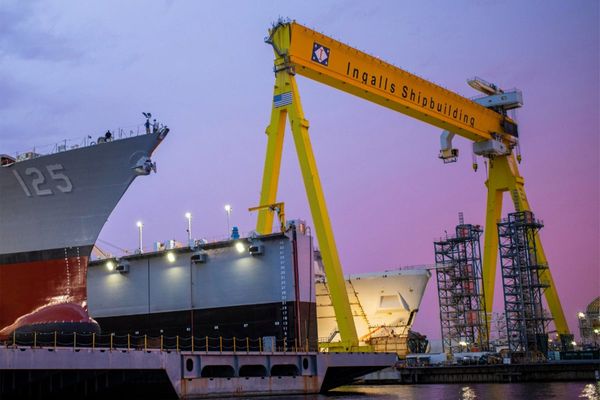
Train fares in England are now expected to rise by a higher-than-expected 5.8% next year, prompting concern among passenger groups.
Rail ticket increases are usually calculated by adding one percentage point to July’s inflation reading on the retail prices index (RPI), which came in 0.2 points above forecasts on Wednesday at 4.8%.
The government has not yet confirmed how it will calculate rail fare increases for 2026 regulated fares, which account for about half of rail journeys.
They would rise by 5.8% if ministers follow the pattern of last year, when they rose by 4.6% in March – one percentage point above the RPI reading from July 2024.
This would be higher than the 5.6% increase that had been predicted, after both the consumer and retail prices index measures of inflation rose more than expected in July, fuelled by higher food prices and travel costs, particularly air fares.
Before the publication of July’s inflation figures, passenger groups had warned that such fare increases risked pricing out some passengers, at a time of a squeeze on consumers’ wallets, including rising food prices.
Almost half of rail fares in England are set directly by Westminster. The devolved Scottish and Welsh governments usually cap fares at a similar level. Regulated fares include season tickets on most commuter journeys, off-peak returns on long-distance routes and flexible tickets for urban rail.
A 5.8% increase in rail fares would result in the cost of an annual season ticket for travel between Gloucester and Birmingham rising by £312 from £5,384 to £5,696, while an annual season ticket between Woking and London would climb by £247 from £4,260 to £4,507.
The Department for Transport (DfT) said there would be an update on changes to regulated fares later this year, but no decisions had yet been made on next year’s rates.
Train operators set increases for unregulated fares, although these are expected to be in line with rises in regulated fares.
Recent official figures showed unregulated long-distance advance fares climbed by 5.9% for the financial year ending in March 2025, according to data from the Office of Rail and Road, at the same time as regulated fares rose by 4.6%, after the government’s decision to set regulated rail fare increases at 1% above the RPI rate in July 2024.
Labour is nationalising train operators as their current contracts expire, while it is setting up Great British Railways, which will oversee Britain’s rail infrastructure and train operations.
Bruce Williamson, a spokesperson for the campaign group Railfuture, said the inflation figure was “even worse than expected”. He said: “The government dare not add another 1% on top of that. When you have got increasing food prices it is making life harder for your average person who is trying to get work.”
Pointing out that fuel excise duty – the tax paid on fuel at the pump – has been frozen for 15 years by successive chancellors, Williamson said: “It is about time rail travellers got a break rather than motorists being sweetened up every time.”
The transport charity Campaign for Better Transport called on the government to do more for passengers.
“With the railways now moving under public control, the fundamental question for the government is how to use its role in setting fares policy to deliver a more affordable rail network and encourage more people to travel on it,” said Ben Plowden, the group’s chief executive, in a social media post.
“Next year’s annual rise represents the first real opportunity for the government to show passengers – both current and future – just how it plans to do this.”
Rail fares have risen by more than inflation for more than 25 years, apart from in 2023, when the previous government said it was making its “biggest ever intervention” on rail fares at a time of soaring inflation after the coronavirus pandemic. Despite this intervention, fares rose by up to 5.9% in March 2023.
A DfT spokesperson said: “The transport secretary has made clear her No 1 priority is getting the railways back to a place where people can rely on them.
No decisions have been made on next year’s rail fares but our aim is that prices balance affordability for both passengers and taxpayers.”







